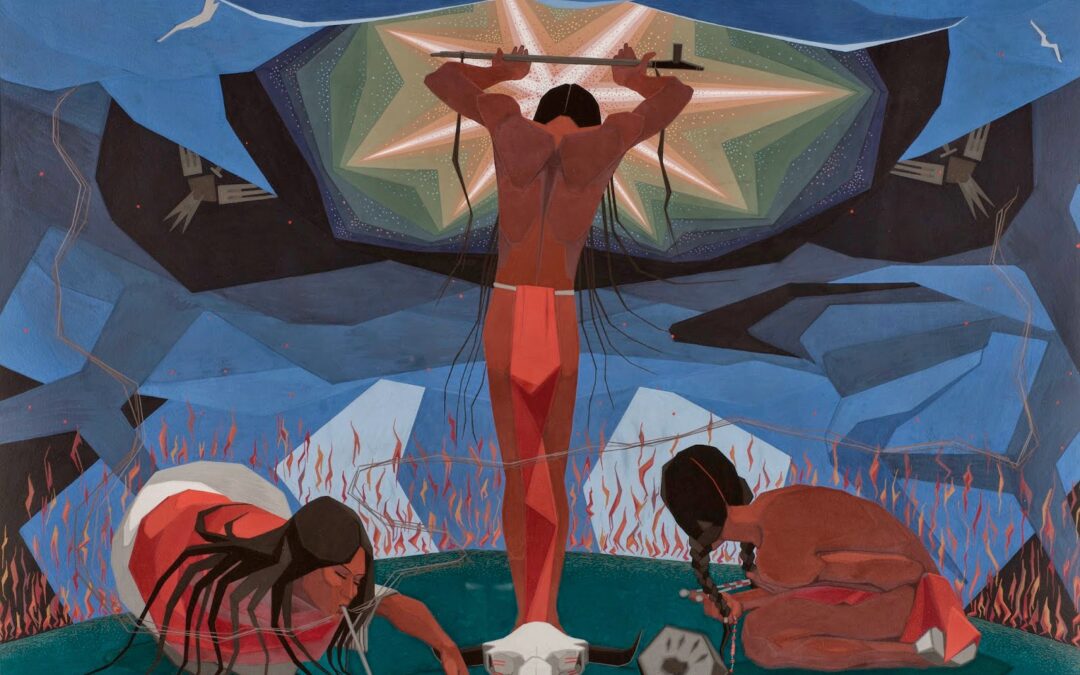
by Moe | Aug 23, 2021 | Demons, Gods & Goddesses, Mind Control Research
According to Native American mythology, Wakan Tanka is the concept of a life force, a Supreme Being or God sometimes called “The Great Spirit.” To the Lakota, Sioux, and other Tribes, it was the animating force of the universe who created the universe, but at the same time, they comprised the universe.
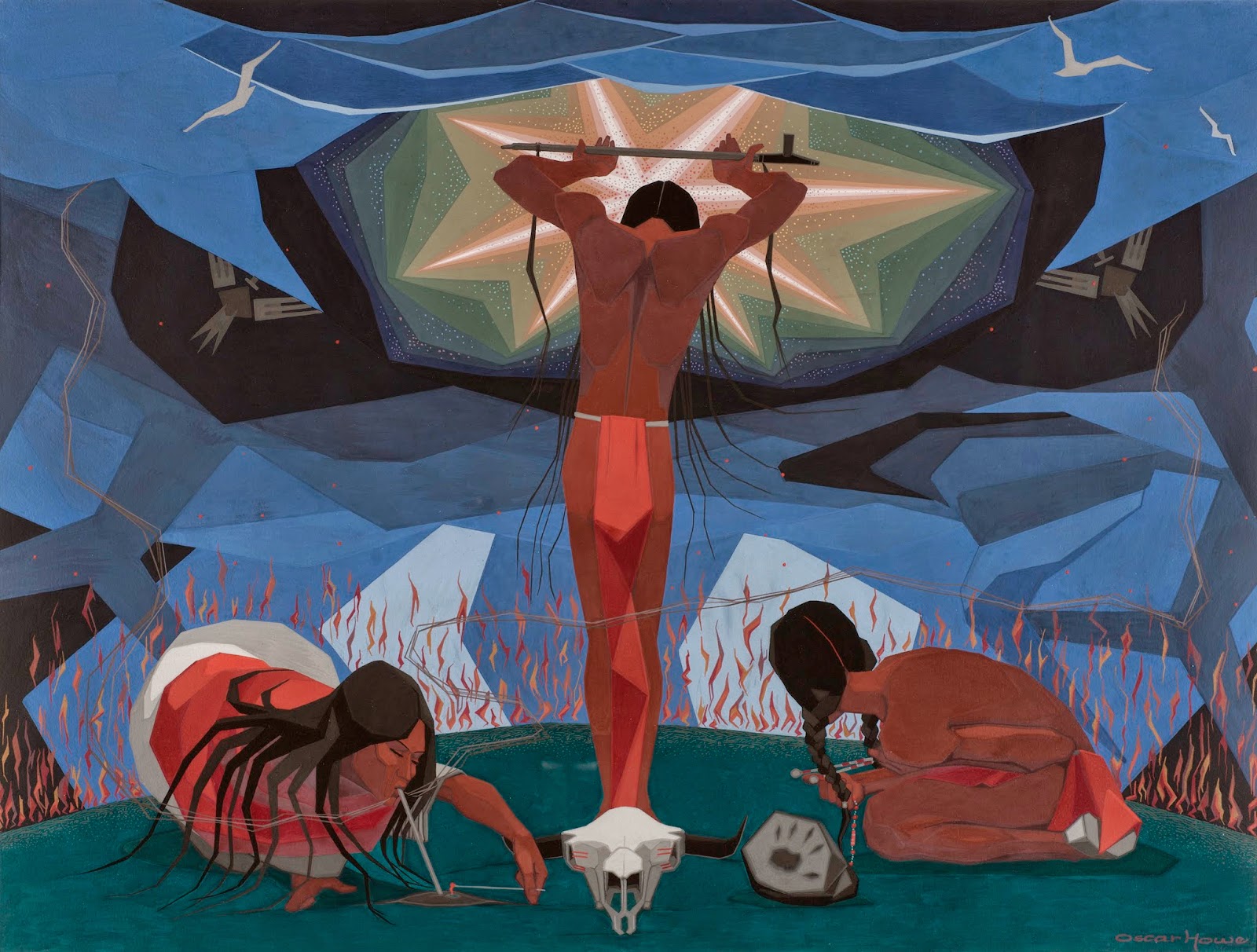
And being the “creators,” the Wakan Tanka also are Wakanpi, who are above humankind and are never born and they never die.” The Wakanpi, spirits, have power over everything on earth and control everything humanity does.
Everything partakes in a sacred relationship born from the oneness of creation which is a manifestation of Wakan-Tanka. All things come and return to Wakan-Tanka, who is all in the universe yet transcending all above all. Wakan Tanka is everything, of everything, and all there is. (1)
Although the Sioux and Lakota recognized that Wakan Tanka could at the same time be both one and many,
it was only the Holy Men called wicasa wakan who were said to be conduits to Wanka Tanka. They sought to impose social order and understand this mysterious life-giving force that sustained all being and gave power to all things through what appears to be a systematic classification not fully comprehended by Westerners.
For example, much of what we know of Wakan Takan comes from early 20th century authors who had worked with local Native American Tribes. The Lakota medicine man Lame Deer says that the Great Spirit “is not like a human being. . . . He is a power. That power could be in a cup of coffee. The Great Spirit is no old man with a beard.” (2)
The shaman Long Knife (George Sword), described as “a man of marked ability with a philosophical trend far beyond the average Oglala” (Walker, 1917:59) elaborated on the concept of tobtob kin; he also explained the place of the shaman as a medium through which Wakan Tanka could communicate with mankind: “When Wakan Tanka wishes one of mankind to do something he makes his wishes known either in a vision or through a shaman. (3)
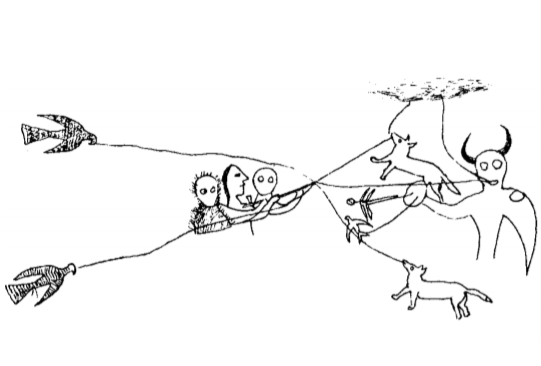
Some akicita wakan or sacred messengers of the Hunkpapa
Siouxas depicted by HisFight. Here, His Fight shows the cedar
and pipestone spirits, a homed thunder god, dragon fly, swallow and coyote. The lines linking each tell the observer that
these sacred messengers smoked the pipe with His Fight and
were there to help him.Froma pictograph collected byDe Cost
Smith, circa 1885.
The Sun Dance is one of the seven significant rites of Lakota religion. Only two other rites are known to survive—the purificatory sweat-bath lodge and the vision quest, the seeking of power from the forces which pervade and animate the universe.
In 1932, Lakota medicine man Black Elk said that “The four-leggeds and the wings of the air and the mother earth were supposed to be relative-like. . . . The first thing an Indian learns is to love each other and that they should be relative-like to the four-leggeds.” 11 And thus we see this very strong kinship relation to the Wemi Tali, the “All Where”: “The Great Spirit made the flowers, the streams, the pines, the cedars—takes care of them. . . . He takes care of me, waters me, feeds me, makes me live with plants and animals as one of them. . . . All of nature is in us, all of us is in nature.” (4)
At the center of all of the creation is the Great Mystery. As Black Elk said:
When we use the water in the sweat lodge, we should think of Wakan-Tanka, who is always flowing, giving His power and life to everything. . . . The round fireplace at the center of the sweat lodge is the center of the universe, in which dwells Wakan-Tanka, with His power which is the fire. All these things are Wakan [holy and mystery] and must be understood deeply if we wish to purify ourselves, for the power of a thing, or an act is in the meaning and the understanding.
Lakota elder, Luther Standing Bear, stated;
“From Wakan Tanka, there came a great unifying life force that flowed in and through all things – the flowers of the plains, blowing winds, rocks, trees, birds, animals–and was the same force that had been breathed into the first man. Thus all things were kindred and brought together by the same Great Mystery . . . . Kinship with all creatures of the earth, sky, and water was a real and active principle . . . .
The animal had rights – the right of man’s protection, the right to live, the right to multiply, the right to freedom, the right to man’s indebtedness – and in recognition of these rights the Lakota never enslaved the animal and spared all life that was not needed for food and clothing . . . .
Everything was possessed of personality, only differing with us in form. Knowledge was inherent in all things. The world was a library, and its books were the stones, leaves, grass, brooks, and the birds and animals that shared, alike with us, the storms and blessings of earth. We learned to do what only the student of nature ever learns, and that was to feel beauty.” (Land of the Spotted Eagle – 1933)
SOURCES:
1. John Fire, Lame Deer, and Richard Erdoes, Lame Deer, Seeker of Visions (New York: Simon and Schuster, 1972), 39–40.
2. Sioux Indian Religion: Tradition and Innovation Raymond J. DeMallie, Douglas R. Parks · 1987
3. WAKANYAN: SYMBOLS OF POWER AND RITUAL OF THE TETON SIOUX
4. Luther Standing Bear, Land of the Spotted Eagle (Lincoln, Nebr.: University of Nebraska Press, 1978), 192–193.
Moe is the founder of GnosticWarrior.com. He is a father, husband, author, martial arts black belt, and an expert in Gnosticism, the occult, and esotericism.
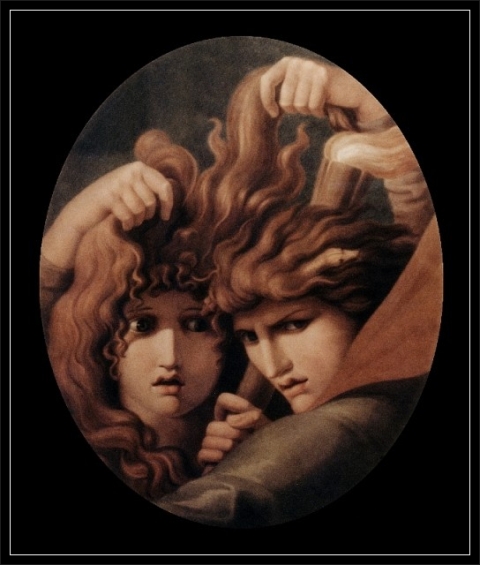
by Moe | Jul 19, 2021 | Demons, Gods & Goddesses
The Erinyes represent a powerful force of darkness in Greek Mythology that live under the ground within the earth. They dwell in the underworld of Tartarus where even the gods had feared them for it was the Erinyes who maintained the established the natural order of things.
The Erinyes are described in Eumenides , a play written by Aeschylus (c 525 – 455 BCE), the “Father of Greek Tragedy,” as Gorgon-like with dark and lothly with loathsome ooze dripping from their eyes, rejoicing in the smell of blood and suck the blood of men. They have the ability to punish humans for crimes against the natural order and their ancestors during life and after death. The glories of men waste away against their black-robed assault.
The principle message of their wrath is a simple one, “an eye for an eye, and a tooth for a tooth.”

They describe themselves in the chorus of Eumenides, “We are the eternal children of night, and called curses under the earth. All-pervading destiny has assigned us their lot to pursue murderers of kindred until the earth covers them, and dying, they are not freed from us.”
When swearing an oath to Achilles in Homer’s Illiad, he calls on Zeus, Earth, Sun, and “the Erinyes,” who under earth take vengeance on men, whoever has … (the Furies) merely working their magic from under earth or if this punishment is inflicted on those under the earth, that is, the dead.
The first historical mention was discovered written on the ancient Linear B tablets found at the City of Gnosis – Knossos on the Holy Island of Crete, in the following forms: e-ri-nu e-ri-nu-we.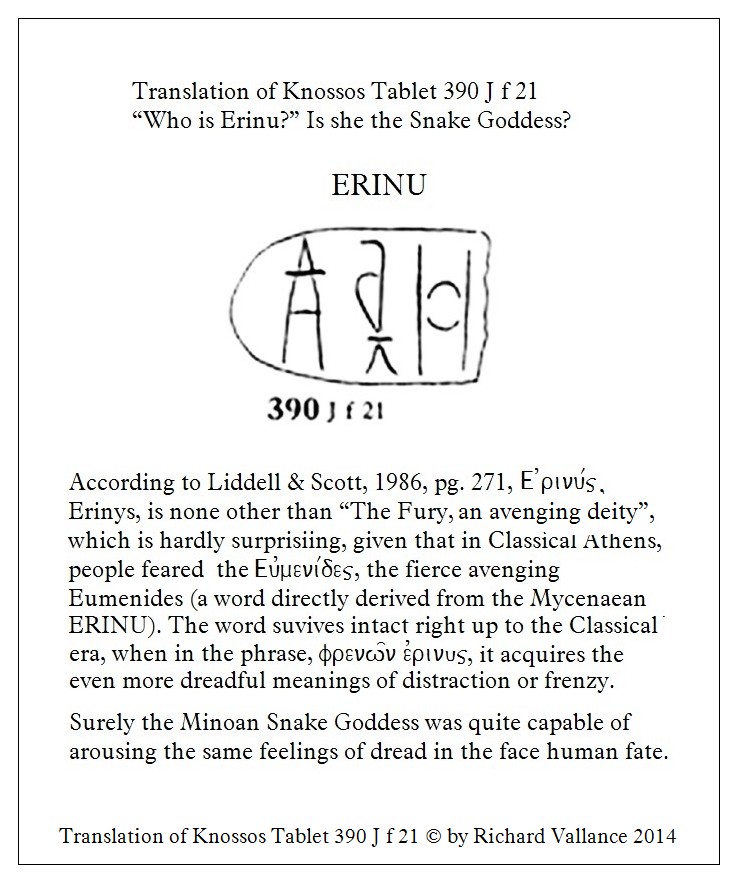
This connection to Crete also aligns with Homer’s Illiad. “One, from Ida, Most Glorious, Greatest, and Helios, You Who watch over all things and listen to all things, and rivers and earth and You Who under the earth punish weary human beings, whoever has sworn a false oath, You be witnesses, guard the oaths of trust”.
The name Ida would correspond to Mount Ida on Crete near Knossos. It is from this location where Josephus writing in the 1st century BC said the Idumeans would derive their name to become who we know as the Tribe of Idumeans or we know of today as the Tribe of Judah.
According to Hesiod’s Theogony, when the Titan Cronus castrated his father Uranus and threw his genitalia into the sea, the Erinyes and the Meliae emerged from the drops of blood when it fell on the earth (Gaia), while Aphrodite was born from the crests of seafoam.
Writing at a later date, the Roman poet Virgil named three in the Aeneid; Alecto or Alekto (“endless”), Megaera (“jealous rage”), and Tisiphone or Tilphousia (“vengeful destruction”).
Ovid writes in Metamorphoses, “(The Erinys) Tisiphone seized a torch steeped in blood, put on a robe all red with dripping gore and wound a snake about her waist, and started from her home; and with her as he went were Luctus (Grief) [Penthos] and Pavor (Dread), Terror (Terror), and Insania (Madness) (Mania) too with frantic face.”
Dante in Canto IX of the Inferno had mentioned the three deities of Erinyes who confront the poets at the gates of the city called Dis. Dante describes the Erinyes as three maiden goddesses, Demeter was worshipped under the title of Erinys in the Arkadian town of Thelpousa.
The Athenians who were Brothers with the Cretans had a sanctuary in Athens that Pausanias said was dedicated to the Erinyes. He writes;
“Hard by [the Areopagos the murder court of Athens] is a sanctuary of the goddesses which the Athenians call the August, but Hesiod in the Theogony calls them Erinyes (Furies). It was Aeschylus who first represented them with snakes in their hair.
But on the images neither of these nor of any of the under-world deities is there anything terrible. There are images of Pluto, Hermes, and Earth, by which sacrifice those who have received an acquittal on the Hill of Ares; sacrifices are also offered on other occasions by both citizens and aliens.”
Moe is the founder of GnosticWarrior.com. He is a father, husband, author, martial arts black belt, and an expert in Gnosticism, the occult, and esotericism.
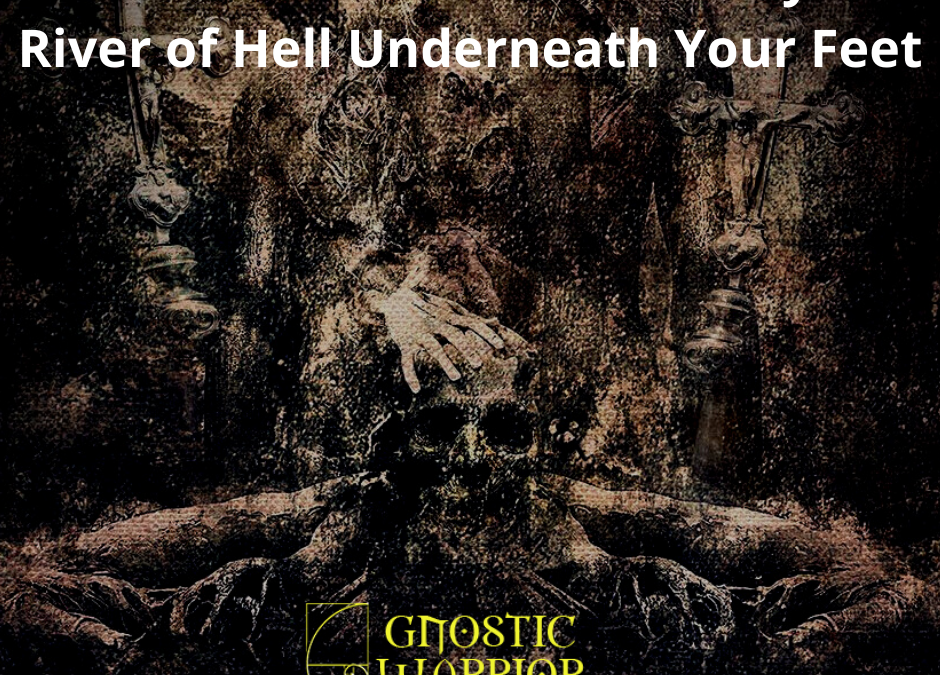
by Moe | Feb 8, 2021 | Demons, Gods & Goddesses, Hell
In Ancient Greece, mountains with subterranean caves served as entrances to a deity and a place called Hades or Tartarus, which would correspond to our modern concepts of hell in Christianity. These unique caverns were considered ancient portals to the underworld, which the Greeks had described as “the Abyss which was a type of legal court that served as human dungeon and hall of punishment” where, according to Plato, “souls are judged after death and where the wicked received divine punishment.”

To the Ancient Greeks, the Abyss, or what is also called Acheron was a place that was located within the bowels of the earth that acted as a place of punishment and judgment ruled by a type of Terrestrial King or “living entity or hive mind” with a military regime of what are called judges in the Scripture. It wasn’t Hades, where the already judged and damned remain, but more like a spiritual courthouse where the dead allegedly go in order to receive their sentences.
The modern equivalent of Acheron or Charon is Haros or Charos (Greek: Χάρος), which is said to be used in common phrases such as “from the teeth of Haros” (Greek: από του Χάρου τα δόντια) meaning to come close to death or “you will be eaten (i.e. taken) by Haros”.
In other Greek myths, Pluto is known as the “Prince of Acheron” who ruled the underworld in a place called Tartarus, which is described as a “meadow” and “thick-shaded and dark,” where the Acheron encircles “the roots of the earth.” There was a unique wall or gate here known as “Pluto’s Gate or the Ploutonion at Hierapolis” in the ancient city of Hierapolis.
This description of “the roots of the earth” and a “meadow” that is “thick-shaded and dark when compared to other ancient and modern descriptions, gives more clues to its whereabouts. We also know that these earth’s roots are connected to Hades, Tartarus, and the place of judgment where Plato tells us “souls are judged after death and where the wicked received divine punishment.”
Plato also mentioned that the Acheron flowed in the opposite direction from Oceanus beneath the earth under desert places. Virgil stated that Acheron with the other infernal rivers in his description of the underworld where he mentions Juno, “flectere si nequeo superos, Acheronta movebo: ‘If I cannot bend the will of Heaven, I shall move Hell.” Sigmund Freud has written in “The Interpretation of Dreams,” that the myths of Acheron were related to a “psychological underworld beneath the conscious mind.”
This would align with my modern interpretation as these great myths relate to modern science and the fact that there is an internet of fungi/molds beneath and within our own feet and bodies. Microscopic entities that we live symbiotically with but it appears as soon as we act subhuman, live unhealthily, or as Christians would say, sin, they become pathogenic and cause illness, diseases, and death in humans.
This would be what the Ancient Greeks would call the Abyss and bowels of the earth in which people who live in this material noosphere via their own second brains or bowels become connected and controlled. A type of symbiotic relationship that normally ends up in doom for the unsuspecting person who has transgressed against these ancient laws of being human.
The very microorganisms who I contend with and documented via my Toxic Mold and Fungal Infection articles are the internal and external microscopic legislators of the human race. Perhaps, this worldwide internet of the dead, the realm of Fungal Shades and its courts had first started here in Acheron?
When researching for the possible location of this mountain and names of these caves, I found an interesting story of an entrance to Tartarus in a place known as Thesprotia near a river called Acheron (Acherusia) and a cave called called “Aornum, Charon or Charonium (Χαρώνειον ἄντρον or χάσμα)” which gave forth poisonous vapors.
In various Greek legends, Aornum (Ancient Greek: Ἄορνον) was an oracle and the name of the cave that is alleged to be where Orpheus travels to recover his wife, Eurydice. It is also known as “Charon’s Cave”, which reflects the belief that it was an entrance for Tartarus or Hades. Strabo also has referred to this legend in describing Aornum and also speaks of other Charonia ( Xapóvia ) where poisonous vapors rise.
For a place of judgment of the damned to be so dreaded and hellish, I find it interesting that Plato described Acheron as the second greatest river in the world, excelled only by Oceanus. The Orphic mysteries had also claimed that the first entity or who we may call the primordial man from which the Light and the cosmos was born here.
The same place that is also known as Tartarus, Hades, and Hell, where, according to Plato, “souls are judged after death and where the wicked received divine punishment.”
When I read these stories, and search for clues of this mountain, river, and cave, I immediately recognize parallels with the ancient myth of the infant Zeus who was placed inside a cave on the Holy Island of Crete by the Magi priest known as the Curetes or Telchinines to protect the child from being “eaten by his father,” Chronos.
This makes sense because Pausanias had written that among the sights of Thesprotia was a sanctuary of Zeus which is near Cichyrus and a lake called Acherusia, and a river called Acheron.
These Greek myths of hell being a place of judgment, that is underneath our feet, and also being eaten can also be connected to the ancient Phoenicians/Hebrews concepts of Mot or Mut, or māwet/mōt, which is the Hebrew word for ‘death’. Muth was described by Philo of Byblos as the equivalent of both Thanatos (Death personified) and Pluto. It is also, however, the name of a specific Canaanite deity or demon, Mot (more precisely Mōtu), known especially from the Ugaritic literature.
In Hebrew scriptures, Death (“Maweth/Mavet(h)”) is sometimes personified as a devil or angel of death (e.g., Habakkuk 2:5; Job 18:13). In both the Book of Hosea and the Book of Jeremiah, Maweth/Mot is mentioned as a deity to whom Yahweh can turn over Judah as punishment for worshiping other gods
In some myths, Mot or Death sends back a message that his appetite is that of lions in the wilderness, like the longing of dolphins in the sea and he threatens to devour Ba’al himself. It has been said that the Jewish tradition of Passover may have begun as a ritual connected with the myth of Mot killing Baal, who was the God of Fire (Phosphorus or Latin Lucifer).
Phoenician historian and a priest of Byblos, Sanchuniathon (Phoenician: 𐤎𐤊𐤍𐤉𐤕𐤍) said;
From this was produced Môt which is the Semitic word for ‘Death’ but which the account says may mean ‘mud’ which some call Ilus (Mud), but others the putrefaction of a watery mixture. And from this sprung all the seed of the creation, and the generation of the universe.
And there were certain animals without sensation, from which intelligent animals were produced, and these were called Zophasemin, that is, the overseers of the heavens.”
Sancuniathon tells us Môt means Death, which some call Ilus (Mud), which is described as a “putrefaction of a watery mixture,” from this sprung all the seed of the creation, and the generation of the universe. He then explains that this Mot AKA Ilus (Mud)’s name is also Cronus whose father is Our-anus situated in the middle of the earth. He had written;
“In the thirty-second year of his power and reign, Ilus, who is Cronus, having laid an ambuscade for his father Ouranus in a certain place situated in the middle of the earth, when he had got him into his hands dismembered him over against the fountains and rivers.
There Ouranus was consecrated, and his spirit was separated, and the blood of his parts flowed into the fountains and the waters of the rivers; and the place, which was the scene of this transaction, is shewed even to this day.”
In Greek mythology, Cronos (Cronus or Kronos) was the Lord of the Harvest and in Rome, he was called Saturn. He was the leader of the first generation of Titans who overthrew his father Ouranus and ruled during the mythological Golden Age and to prevent any of his sons or daughters from ruling in his stead, he had a habit of “eating them.”
After Rhea secretly gave birth to Zeus in Crete, to prevent Cronos from eating the infant, she handed Cronus a stone wrapped in swaddling clothes, also known as the Omphalos Stone, which he swallowed, thinking that it was his son, Zeus.
Once Zeus had grown up, he forced his father Cronus to regurgitate the contents of his stomach in reverse order: first the stone, which was set down at Pytho under the glens of Mount Parnassus to be a sign to mortal men, and then his two brothers and three sisters.”
The story of Cronus eating his children is interpreted by some people like me as an allegory to a specific aspect of time held within Cronus’ sphere of influence. This sphere I contend deals with an ancient science that connects Cronus to our Stomachs or Gi Tracts, which science has proved is our second brains and can influence our thoughts in a bad way, which may explain his fierce nature and without hesitation, he eats his own children.
The meaning of Cronos or Kronos is composed of the words ‘kro and nus’. It is related to the Hebrew words קָרוֹב karov and קְרוֹבָה krova, which means close or near and the meaning of the word kerev isinterior, inside; (in plural) innards. בְּקֶרֶב Bekerev, means among, amidst; internally, on the inside and קְרָב krav is battle, combat; struggle, race, competition.
The location of this mountain where this entry to Hades is still disputed amongst academians being either the Psychro Cave (Greek: Σπήλαιο Ψυχρού), which is claimed to be the Diktaean Cave (Greek: Δικταῖον Ἄντρον Diktaion Antron) in Lasithi plateau of eastern Crete or Mount Ida, which is the exact location where who Josephus called the Idumean had spawned and who we call the Tribe of Judah.
The same Tribe of David, Solomon, and later Jesus.
As I explain in my previous article, Pergamon: The Throne and City of Satan, in the Christian Scripture, we read of the home of Satan is located in Revelation 2:12 at Pergamos. Where Satan’s throne is,” and home to one of the seven churches written about by Saint John in the Book of Revelation.
It was the original uncorrupted church of Christ that later became the seat of Antichrist or Throne of Satan.
Satan’s throne was located here near Mount Ida at Knossos (The City of Gnosis), which was also known anciently as the Ancient Naval Center of the Old World. The name Navy or Naval means “a central point; and or a middle” from the Latin medius, meaning middle, and terra, meaning earth, and also the center of the human bowels and what we call our second brain.
So it would make sense that this location would have been chosen as being Holy due to its age, history, and rituals performed within these caves and on this soil for what I contend, thousands of years until the traditional religion was conquered in favor of a corrupted one for world dominion.
“And it is called Akheron (Acheron) since within the bosom of the earth it goes forward pouring forth pains.” (Melanippides, Frag 759 (from Stobaeus, Anthology -Greek lyric 5th B.C.)
I will let the great Plato finish my thesis to put this in perspective on how this great human drama plays out and I contend, has been the heiros gamos for the last 3,000 plus years.
“[The] streams are many and great and of all sorts, but among the many are four streams, the greatest and outermost of which is that called Okeanos (Oceanus), which flows round in a circle, and opposite this, flowing in the opposite direction, is Akheron (Acheron), which flows through various desert places and, passing under the earth, comes to the Akherousian (Acherusian) Lake.
To this lake the souls of most of the dead go and, after remaining there the appointed time, which is for some longer and for others shorter, are sent back to be born again into living beings. The third river flows out between these two, and near the place whence it issues it falls into a vast region burning with a great fire and makes a lake larger than our Mediterranean sea, boiling with water and mud.
Thence it flows in a circle, turbid and muddy, and comes in its winding course, among other places, to the edge of the Akherousian lake, but does not mingle with its water.
Then, after winding about many times underground, it flows into Tartaros at a lower level.
This is the river which is called Pyriphlegethon, and the streams of lava that spout up at various places on earth are offshoots from it. Opposite this the fourth river issues, it is said, first into a wild and awful place, which is all of a dark blue color, like lapis lazuli. This is called the Stygios (Stygian River), and the lake which it forms by flowing in is the Styx.
And when the river has flowed in here and has received fearful powers into its waters, it passes under the earth and, circling round in the direction opposed to that of Pyriphlegethon, it meets it coming from the other way in the Akherousian Lake. And the water of this river also mingles with no other water, but this also passes round in a circle and falls into Tartaros opposite Pyriphlegethon. And the name of this river, as the Poets say, is Kokytos (Coytus). Such is the nature of these things.
Now when the dead have come to the place where each is led by his genius (daimon) [i.e. by Plato’s equivalent of Hermes Guide of the Dead], first they are judged and sentenced [i.e. by the Judges of the Dead], as they have lived well and piously, or not.
And those who are found to have lived neither well nor ill, go to the Akheron and, embarking upon vessels provided for them [i.e. the equivalent of Kharon’s (Charon’s) skiff], arrive in them at the lake; there they dwell and are purified [i.e. by the equivalent of the Erinyes], and if they have done any wrong they are absolved by paying the penalty for their wrong doings, and for their good deeds they receive rewards, each according to his merits.
Those who are curable, but are found to have committed great sin–who have, for example, in a moment of passion done some act of violence against father or mother and have lived in repentance the rest of their lives, or who have slain some other person under similar conditions–these must needs be thrown into Tartaros, and when they have been there a year the wave casts them out, the homicides by way of Kokytos, those who have outraged their parents by way of Pyriphlegethon.
And when they have been brought by the current to the Akherousian Lake, they shout and cry out, calling to those whom they have slain or outraged, begging and beseeching them to be gracious and to let them come out into the lake; and if they prevail they come out and cease from their ills, but if not, they are borne away again to Tartaros and thence back into the rivers, and this goes on until they prevail upon those whom they have wronged;
for this is the penalty imposed upon them by the judges.”
Moe is the founder of GnosticWarrior.com. He is a father, husband, author, martial arts black belt, and an expert in Gnosticism, the occult, and esotericism.
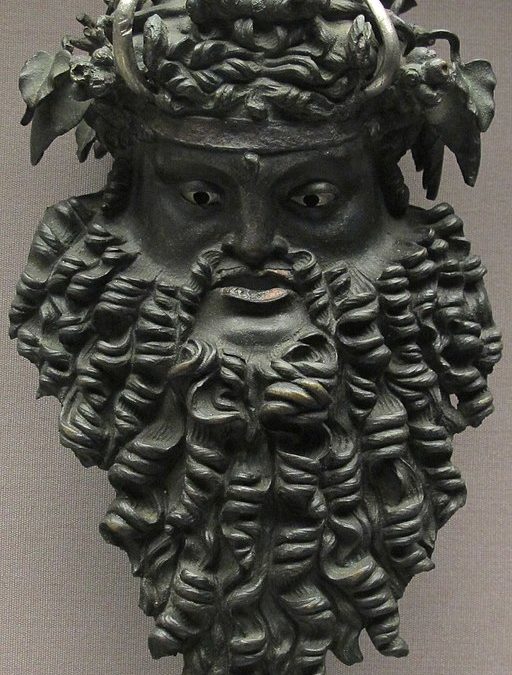
by Moe | Mar 5, 2020 | Duality, Gods & Goddesses, Latest Media
The double face of the tragic hero known as Dionysus represents the dual nature of his persona of joy and suffering and life and death; a god known symbolically as “the spirit of fire and dew” who was “most terrible and most gentle to mortals” (Bacchae 861)
Philo hints to the god’s dual roles in his benefactions for humanity being that he “cultivated the vine and poured out from it the sweetest drink.” According to Opian, as a child of duality, Dionysus delighted in tearing kids into pieces and bringing them back to life again which had later given rise to the characterizations as “the raging one” and “the mad one.” (more…)
Moe is the founder of GnosticWarrior.com. He is a father, husband, author, martial arts black belt, and an expert in Gnosticism, the occult, and esotericism.
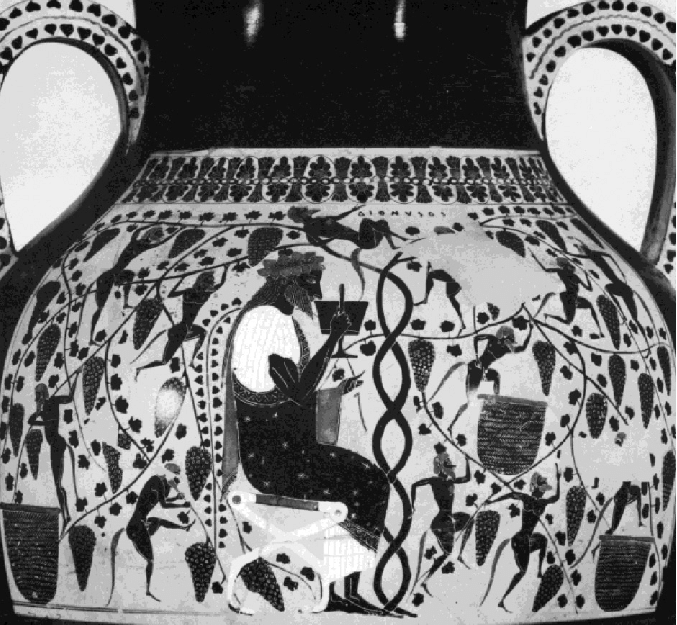
by Moe | Jan 21, 2020 | Gods & Goddesses, Latest Media
The ancient mythos surrounding the origins of Dionysis is that he had a double birth of fire and water. He was also strongly associated with cultivating vines (fertility) and the development from the juice of the black vine via its decaying grapes which we call wine. (human ingenuity).
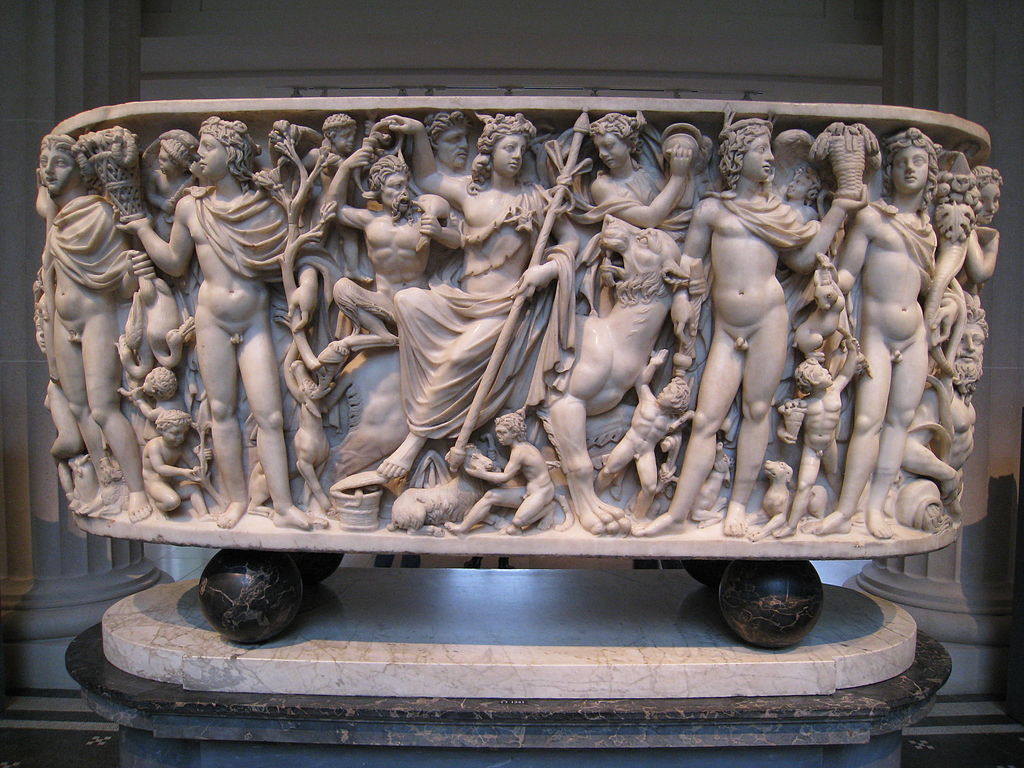
As the sun dries the earth clay/mud and ripens the grapes of the green vine, in a like manner, water and the morning dew moistens the same soil as they give rise to the microorganisms who give birth to spirits – the “black vine juice.”

A drink made of molds/fungi that brings the duality to the consciousness of humans who under its influence know both joy and sorrow – Laughter and cries.
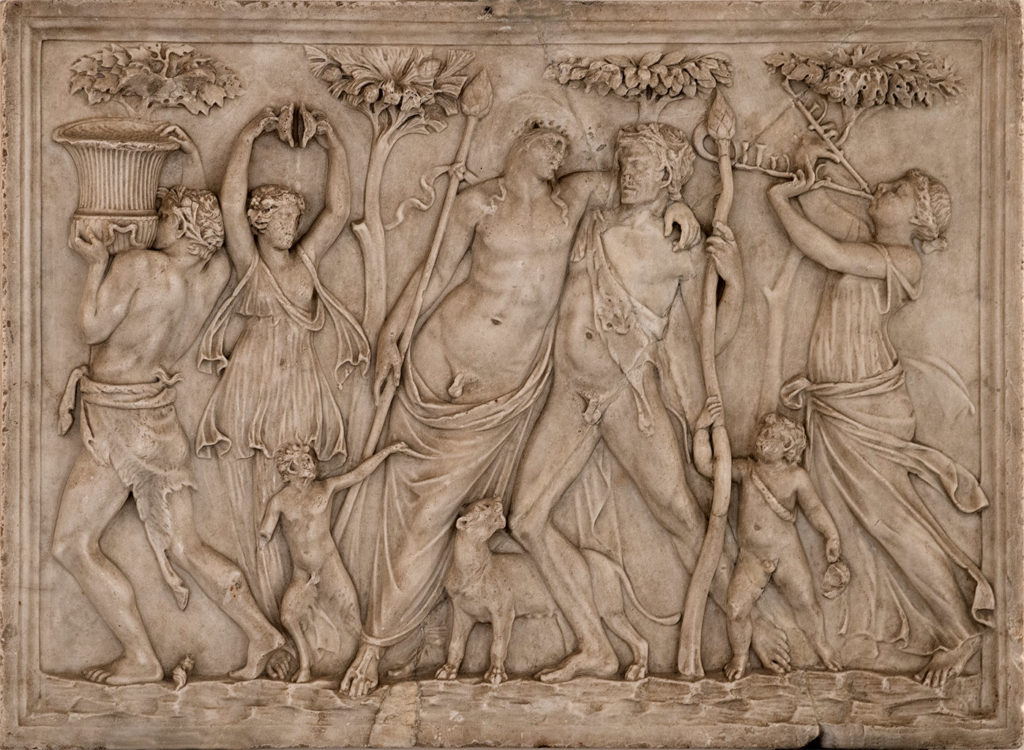
The Black Vine of Dionysus brings riches and financial ruins and conscious and unconsciousness or death such as Lycurgus, who raped his mother and ended up blind and mad forever imprisoned within the filaments of the underworld for opposing Dionysus.
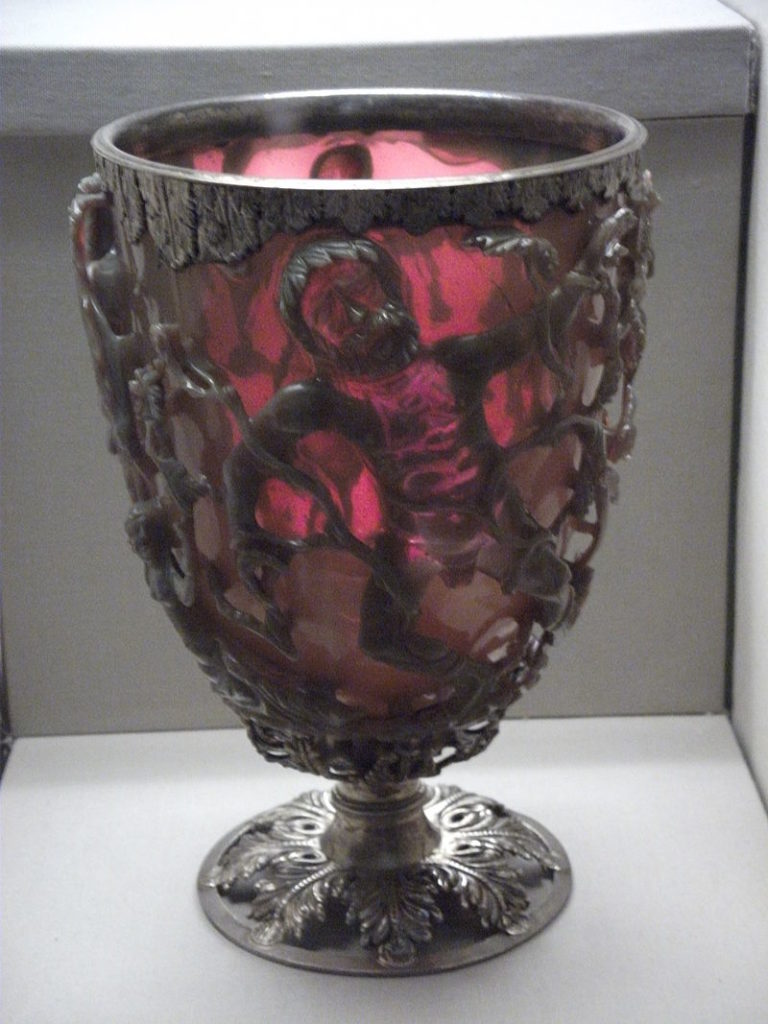
The bearded Dionysus sits beside the Goddess of Gnosis from Crete, Ariadne, and a Satyr. Through the filaments of Dionysus, Ariadne will awaken to her true origins.
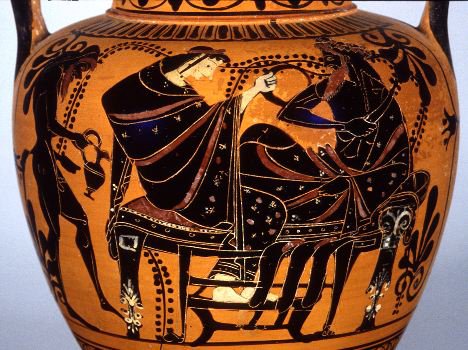
As the black vine, Dionysus is the first representative/symbol of the individual vine or as I conjecture in modern terms, he was the first idea of the species of fungi (black vine) to become alive and conscious molding into another thousand vines.
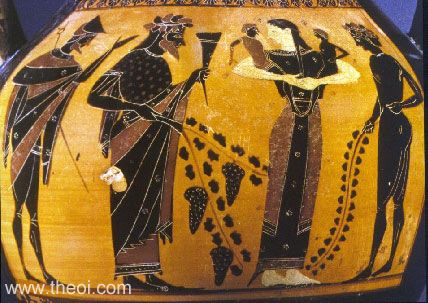
Moe is the founder of GnosticWarrior.com. He is a father, husband, author, martial arts black belt, and an expert in Gnosticism, the occult, and esotericism.
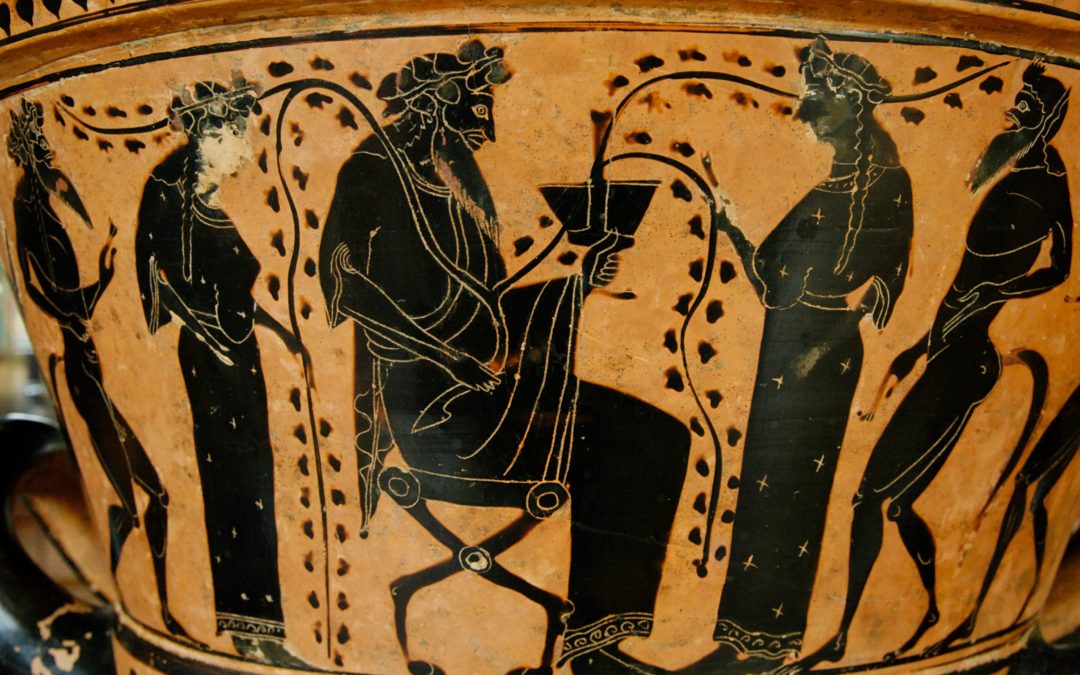
by Moe | Jan 12, 2020 | Gods & Goddesses, Latest Media
In ancient Crete and Greece, the God Dionysus was the main deity whose tragic story and rituals reflect the awesome drama we know as birth, life, human duality, death, decay, and the great restoration of all beings.
This tragedy in which the human with his lower animal instincts form the Black Dionysus who was considered a Son of God and also the God of this World with his various epitaphs showing that he was also a God of nature, vegetation, the tree, vines, and decaying grapes in the form of wine where he became the drunk God.
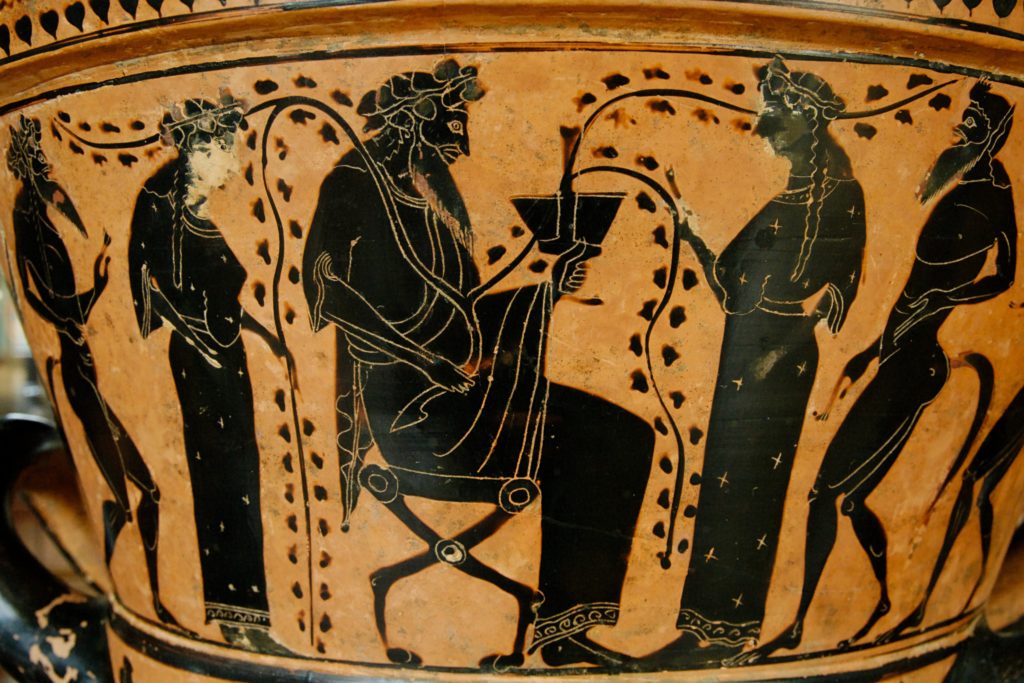
Rather than rehash what has been written about Dionysus many times before, I would like to focus on some new revelations dealing with the idea of a living, decaying, dying and reborn god with his various epitaphs reflect the true nature of humans and the dual aspects of our reality which become evident once we come to know the true history and our own inner Black Dionysus on an intimate basis, we can balance him with the science of the light of Apollo.
DIONYSUS DENDRITES – THE TREE GOD
The first depictions in ancient artwork and literature his early developments as a tree God before he became associated with grapevines and wine when almost all the ancient Greeks of this time had sacrificed to “Dionysus of the tree” and was strongly associated with the pine-tree. In Thebes, the Capital of Boeotia, and the Phoenicians, one of his titles was “Dionysus in the tree” and a legend of Potniae tells that the people of the town, having offended Dionysus, were suffering from an evil pestilence.
The government of Delphi had commanded the Corinthians to worship a specific pine-tree “equally with the god,” so they made two images of Dionysus out of it, with red faces and gilt bodies. (1)
As a tree God, Dionysus was the patron of cultivated trees and harvests in which prayers were offered to him and his images set in orchards so that he would make the trees grow and they would have a bountiful harvest and he is then referred to as “well fruited,” “he of the green fruit,” and “making the fruit to grow.” One of his titles was “teeming ”or “bursting ”(as of sap or blossoms).
In ancient Athens, the Athenians were said to sacrifice to him in order to ensure a full harvest of all the fruits of the land.
The earliest images of the God show him made of wood with the branches still attached in parts, and in this version, he was called Dionysus Dendrites, the protector of trees. His image was often merely an upright post, without arms, but draped in a mantle, with a bearded mask to represent the head, and with leafy boughs projecting from the head or body to show the nature of the deity. In art, a wand, tipped with a pine-cone, is commonly carried by the god or his worshippers.
In this image, it appears as if fungal spores are shooting from his body.
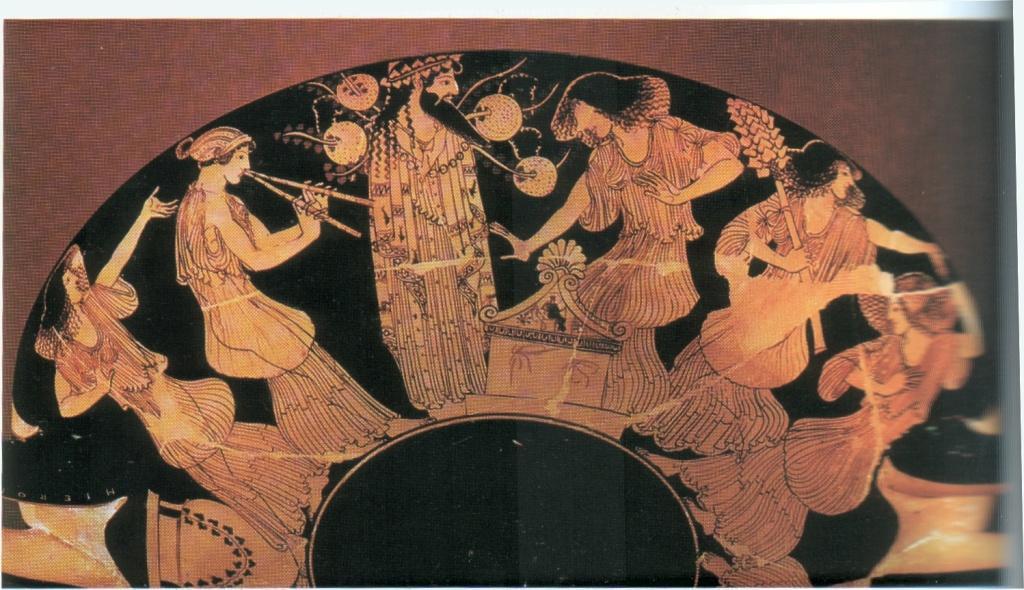
THE SCIENCE OF DENDRITES
I find it fascinating that in the earliest times he is called Dionysus Dendrites given the fact that today in 2020, when you research this word “Dendrites,” you find it means “a crystal or crystalline mass with a branching tree-like structure,” and “a short branched extension of a nerve cell, along which impulses received from other cells at synapses are transmitted to the cell body.”
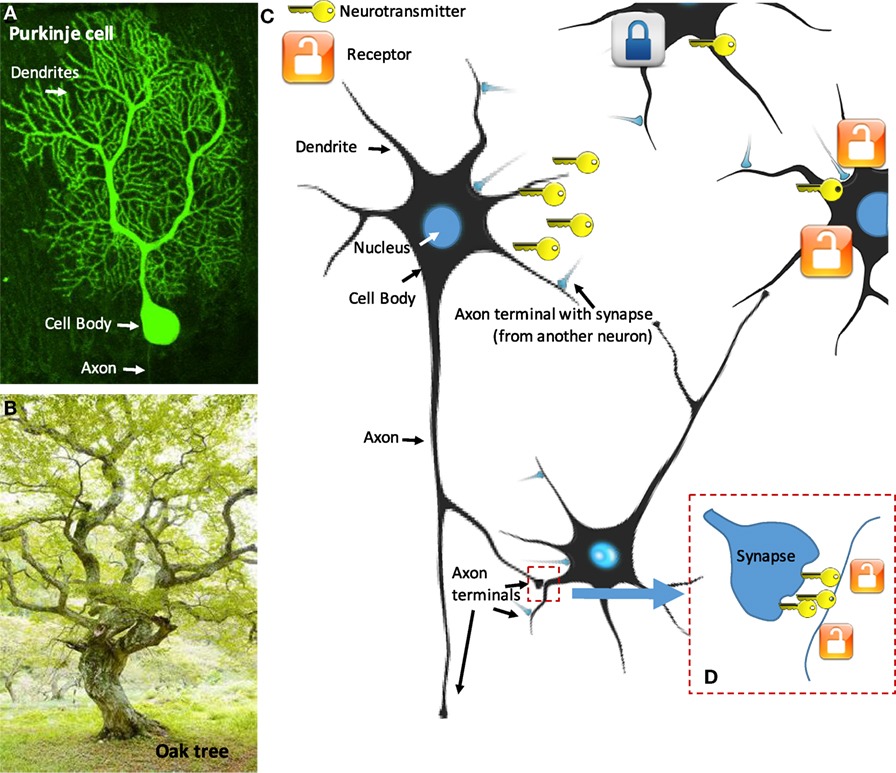
With the history of Dionysus as a protector of trees and harvest being “Dionysus of the tree”, this ancient myth is actually connected to modern science given the fact that today a dendrite means “a structure of nerve cells that comprise the human brain.” The word was coined by scientists who first studied the structure of the brain, they noted its strong resemblance to trees so they named it after the Greek Dendron, meaning “tree.”
Believe it or not, these Dendrites appear to be natures, animals, mammals, and humans’ super internet signaling pathway that we all share. A type of biological internet for communication and a whole host of other mechanisms such as parasitism and natural selection.
For example, a Dendrologists is a scientist who studies wooded plants who at one time theorized that trees that lived together were cooperating with each other by sending resources through their roots and sharing nutrients, forming a complex system sometimes referred to as the “wood wide web.”

However, they are now finding that the trees actually communicate through a complex network of fungi that connect trees forming a symbiotic relationship. The uncanny resemblance between the human dendrites which like filamentous structures within the brain and the fungi in the air and within the soil (mycelium) is in my opinion, more than accidental.
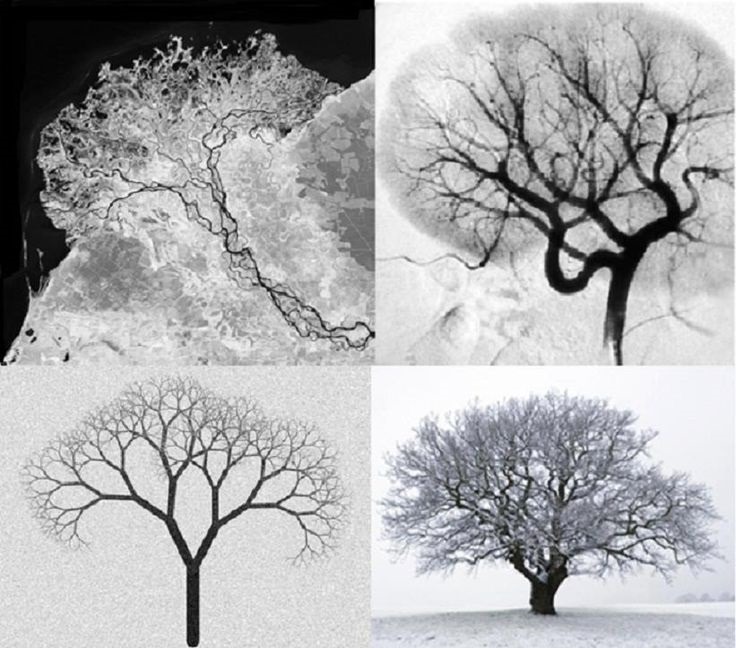
The University of Harvard says, “Fungi can cover a large surface area by developing white fungal threads known as mycelium. Mycelium spreads out on top of tree roots by up-taking sugars from the tree and by providing vital minerals back to the tree, such as nitrogen and phosphorus (Figure 2). This symbiotic relationship between tree roots and fungi is known as the mycorrhizal network (from Greek, Myco, “fungi” and Rhiza, “root”).
Scientists believe all trees have a mycorrhizal network, but “trees only communicate with each other if the fungal and bacterial species that constitute their mycorrhizal networks are the same.” (2)
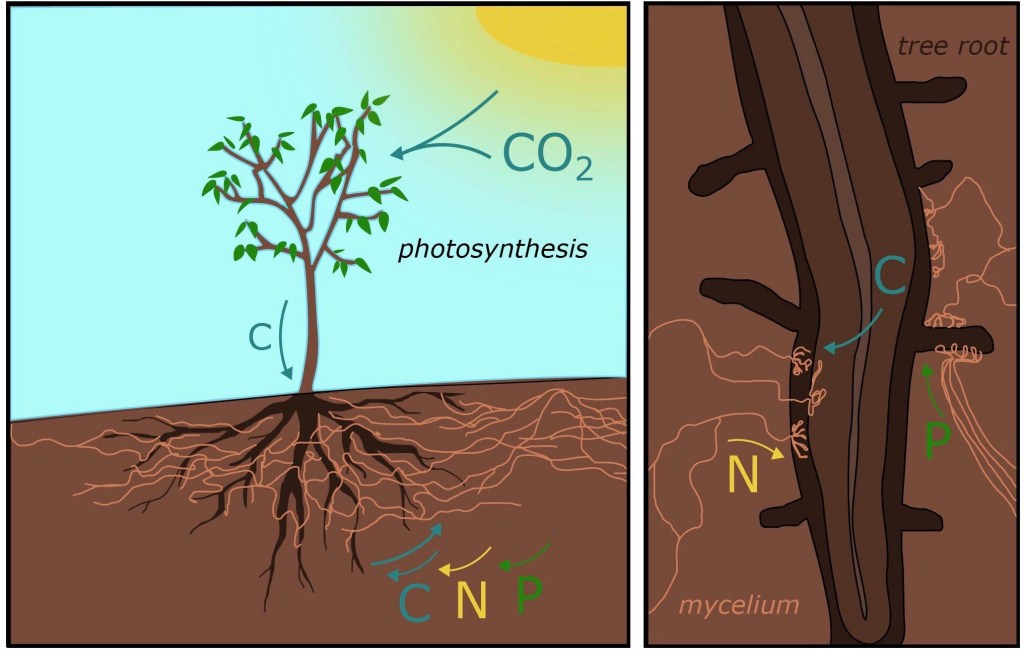
Now ponder on that fact next time you wonder why you like certain people and not others or are attracted to someones writing and repelled by others. Perhaps, like a tree, our ability to understand the communication about cooperation and the future philosophy will be determined by the very fungi we carry in our bodies. This theory goes along with my article, “The mycelium network of fungal infected Geniuses who built our world.”
This question led me to more research showing that various human dendritic cells (DCs) function as recognition molecules that act as a link between innate and adaptive immunity in order to recognize of pathogens. These dendritic cells then gather the necessary knowledge of the pathogen to employ the appropriate immune weapons via the Toll-like receptors (TLRs) to respond to the threat from different groups of microbes. (3)
As Paul Stamets had written in Mycelium Running: How Mushrooms Can Help Save the World;
“I believe that mycelium is the neurological network of nature. Interlacing mosaics of mycelium infuse habitats with information-sharing membranes. These membranes are aware, react to change, and collectively have the long-term health of the host environment in mind. The mycelium stays in constant molecular communication with its environment, devising diverse enzymatic and chemical responses to complex challenges.”
“I see the mycelium as the Earth’s natural Internet, a consciousness with which we might be able to communicate. Through cross-species interfacing, we may one-day exchange information with these sentient cellular networks. Because these externalized neurological nets sense any impression upon them, from footsteps to falling tree branches, they could relay enormous amounts of data regarding the movements of all organisms through the landscape.”
VINE AND WINE GOD
Homer who had written about Dionysus never mentioned him in association with wine, nor does he appear in Olympus. It is said that Hesiod was the first who calls wine the gift of Dionysus and later is described as the god who teaches man the preparation of wine, whence he is called the “drunken god” (uatváuevos), and the sober king Lycurgus will not, for this reason, tolerate him in his kingdom. (Hom. Il. vi. 132, &c., Od. xviii. 406, comp. xi. 325.)
From this point on, the ancient mythos surrounding the origins of Dionysis had morphed to that he had a double birth of fire and water and strongly associated with the juice of decaying grapes that we know of as wine As the sun dries the earth clay/mud and ripens the grapes of the vine, in a like manner, water and the morning dew moistens the same soil and the microorganisms drink to give birth to the “black vine.”
As the black vine, Dionysus is the first representative/symbol of the individual vine or as I conjecture in modern terms, we can possibly say that what they may have meant in the esoteric sense is that he was the first idea of the species of fungi (black vine) to become alive and conscious molding into another thousand vines. (4)
This may be why Pausanias writes in his, Description of Greece, “Dionysos is lying down in a cave, a bearded figure holding a golden cup, and clad in a tunic reaching to the feet. Around him are vines, apple-trees and pomegranate-trees.”
HADES: THE CHAINS OF DARKNESS IN TARTARUS
Dionysus is also associated with Hades or hell and caves were considered as a gate to the underworld as the abode where the gods like Zeus and his son, Dionysus had presided over human affairs. In another myth, in observing the decay of vegetation in winter, Dionysus was supposed to be slain and to join the deities of the underworld.
But in a sick twist of fate, the divine child was secretly saved and watched over by the Cretan priesthood – the Curetes; but the jealous Hera discovered where be was, and sent Titans to the spot, who, finding him at play, tore him to pieces, and cooked and ate his limbs, while Hera gave his heart
to Zeus.
Caves, tombs, and subterranean chambers have played the central place of initiation for candidates in various secret societies for many thousands of years such as we find with the Dionysian and Eleusinian mysteries. Caves and dark chambers have a long association with the womb of the earth mother and the secret rites of birth, death, hell, midwifery, and with the annual birth of the divine child.
It was said that Dionysus came to Eleusis and took his place there by the side of Hades,” so that Heraclitus in one of his dark words declares this identification to be a proof that life and death are one.” (5)
These Great Caves of Initiation became known in the secret mysteries as “The gates of hell” which were at various holy caves around the world that have a legendary reputation for being entrances to the underworld such as found at Mount Ida on Crete in the cave of Zeus.
When we look to Scripture, the Greek words for “chains” and for “caves” are almost exactly alike and we find that in 2 Peter 3/4:
“In their greed, these false teachers will exploit you with deceptive words. The longstanding verdict against them remains in force, and their destruction does not sleep. For if God did not spare the angels when they sinned, but cast them into hell, delivering them in chains to be held in gloomy darkness until their judgment.”
I find it interesting that the “sinning angels” having been “cast to chains of darkness” delivering them “in chains to be held in gloomy darkness.”
When I see “chains of darkness,” it takes me back to Dionysius Dendrites and the fungal science I spoke of above for the sinners should go with “delivered” or with “having cast into Tartarus or cast down into hell” “reserved unto judgment,” is a place of preliminary detention with the evil spirits (fungi/molds) who tempt and harass us on earth.
Man is subject to these spirits when he is stuck in a dream state bound by his lower nature in which the evil spirits have dominion over his soul. He is asleep in Hades tormented be his shadow and evil demons who hold him in chains.
Plotinus writes of the dark mire and what is meant by the falling asleep in Hades;
“When the soul has descended into generation (from its first divine condition) she partakes of evil, and is carried a great way into a state the opposite of her first purity and integrity, to be entirely merged in which, is nothing more than to fall into dark mire.”
He continues, “The soul, therefore, dies as much as it is possible for the soul to die: and the death to her is while baptized or immersed in the present body, to descend into matter, and be wholly subjected by it; and after departing thence to lie there till it shall arise and turn its face away from the abhorrent filth. This is what is meant by the falling asleep in Hades, of those who have come there.” (Ennead I., book viii)
The Athenian philosopher, Simplicius, writing 2,500 years ago calls matter the dregs or sediment of the first life; matter being, as it were, a certain mire or mud. (7)
Of this mud, it is written in Discordia demens of Virgil; an exact translation of the Νεικεϊ μαινομενῳ of Empedocles;
Hinc via, Tartarei quæ fert Acherontis ad undas;
Turbidus hic cæno vastaque voragine gurges
Æstuat, atque omnem Cocyto eructat arenam.*
“Here is the way which leads to the surging billows of Hell [Acheron]; here an abyss turbid boils up with loathsome mud and vast whirlpools; and vomits all its quicksand into Cocytus.”
The path to conquering the self or shadow constituted the teachings of the Lesser Mysteries to signify the condition of the initiate’s unpurified soul in its earthly body controlled by the spirits of matter until purified by philosophy in body, mind and the Holy Spirit, suffers death.
He is in the dark fungal chains in Hades.
His only hope for salvation is an initiation into the Higher Mysteries of Nous.
As Proclus writes in Theology of Plato, book iv;
“The perfective rite [τελετη, telete],” says he, “precedes in order the initiation [μυησις, muesis], and initiation, the final apocalypse, epopteia.”
Προηγειται γαρ, ἡ μεν τελετη της μυσεως, αυτη δε της εποπτειας. (8)
In which Virgil leads us to the Elysian fields:
Devenere locus lætos, et amæna vireta
Fortunatorum nemorum, sedesque beatas.
Largior hic campos æther et lumine vestit
Purpureo; solemque suum, sua sidera norunt.*
“They came to the blissful regions, and delightful green retreats, and happy abodes in the fortunate groves.
A freer and purer sky here clothes the fields with a purple light; they recognize their own sun, their own stars.”
SOURCES:
1. The Golden Bough: A Study in Magic and Religion By James George Frazer, Sir James George Frazer – 1922
2. Exploring The Underground Network of Trees – The Nervous System of the Forest by Valentina Lagomarsino figures by Hannah Zucker
3. Dendritic cells and fungi – 2003 Study
4. Encyclopaedia of Religion and Ethics, Volume 4 edited by James Hastings, John Alexander Selbie, Louis Herbert Gray
5. Studies of the Gods in Greece at Certain Sanctuaries Recently Excavated By Louis Dyer
6.
7. Physics of Aristotle
8. Theology of Plato, book iv. p. 220.
Moe is the founder of GnosticWarrior.com. He is a father, husband, author, martial arts black belt, and an expert in Gnosticism, the occult, and esotericism.






















